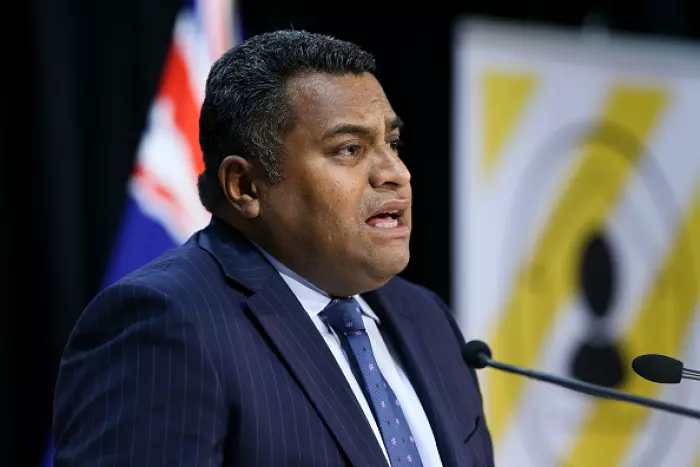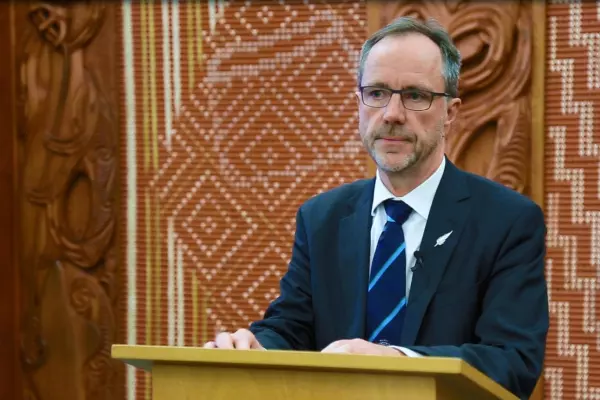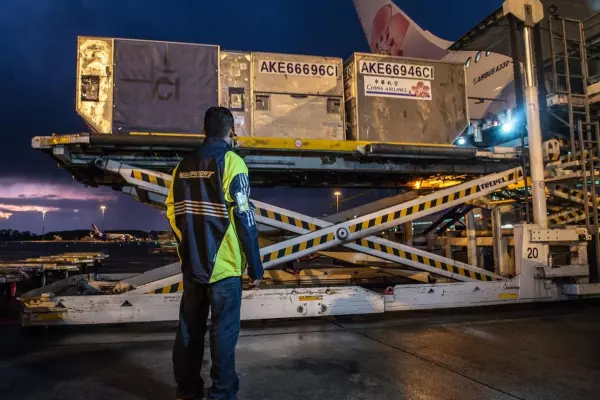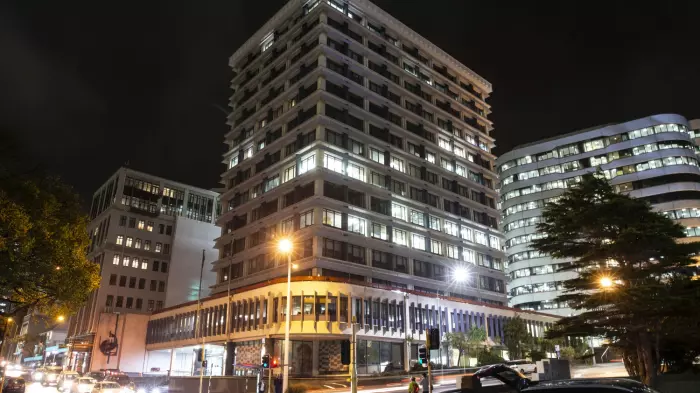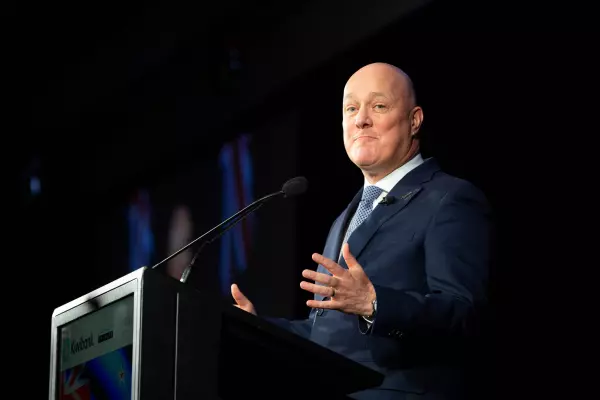Immigration is shaping up to be one of the key policy battlegrounds for 2022.
The border closures exacerbated an already emerging skills shortage which is now driving wage growth and inflationary pressures.
This in turn leaves the government’s reconnecting to the world timetable stuck between an economic rock and the hard place of emerging strains of covid that have already seen that timetable put on hold.
Opposition leader Chris Luxon gets this – not only has he promoted immigration spokesperson Erica Stanford to the front bench, but he has given her the education portfolio as well.
 National has promoted immigration spokesperson Erica Stanford to the front bench. (Image supplied)
National has promoted immigration spokesperson Erica Stanford to the front bench. (Image supplied)Stanford told BusinessDesk that right now, the single biggest inhibitor of NZ's economic recovery, long term and short term, is access to skilled labour.
“The job of the minister right now is to make sure that we have access to skilled labour.”
David Cooper, chief executive of immigration advisory Malcolm Pacific, said employers are finding it very difficult to persuade highly skilled workers to give up overseas jobs, sell their houses and come to New Zealand in the hope of getting residency.
“We're talking highly skilled workers … doctors, dentists, IT specialists, who are all saying, ‘Well, I'd like to come, but on a work visa, I can't buy a house, I can't really settle. And you can't guarantee I'm going to get residence because the government's still reviewing the rules. So why would I take that risk?’”
Anticipated announcements
The Opposition and business leaders will be eagerly anticipating the series of immigration announcements that we are likely to see in the coming weeks, including:
- Sector allocations for the next (and perhaps final) round of critical worker exception visas.
- International student settings, including post-study work rights.
- Work visa settings for when the border reopens, such as pathways to residence for skilled migrants and temporary work visas for lower-skilled migrants.
Business and government leaders alike will be hoping immigration minister Kris Faafoi’s next critical worker announcement will be the last time they have to wrestle over such priorities as DJs versus tech workers versus nurses and that the debate can move on to what the new normal should look like post-covid.
Flashback to 2017
This will take us right back to the immigration debates of 2017 – the last election year of the pre-covid world.
Most parties recognised net migration inflows had blown out to unsustainable levels straining urban housing and infrastructure, particularly in Auckland.
Many economists were also arguing business had become overly reliant on filling skill gaps with short-term migrants rather than upskilling the local workforce.
The National government’s response was to begin tinkering with work visa settings but even those modest reforms saw a lot of push back from affected sectors, such as hospitality.
Meanwhile, Labour and NZ First entered a bidding war over how much to reduce net migration from then-current levels of about 70,000 per year, which gave us one of the highest population growth rates in the OECD.
Labour said it would aim to reduce that number by 20,000-30,000 while NZ First wanted to set an overall cap of 10,000 migrants a year.
Labour prevailed in both the election and coalition negotiations, and in 2019 announced a major shake-up of temporary work visas for skilled migrants.
Labour’s big idea was to divert the wave of temporary migrant workers, overwhelming Auckland’s infrastructure, into the regions to fill genuine skills gaps identified by regional skills leadership groups.
The reform would replace a complex system of six categories of temporary work visas with one simplified visa, centred on a system of accredited employers, that was also intended to be better integrated with welfare and training systems.
The new policy was due to take effect in November 2021 but because of covid is now scheduled to commence in July (fingers crossed).
Labour’s other big idea was to slash international student numbers by 10,000 which would take them back to about the level they were before National took over the reins.
The thinking was to reduce the numbers studying at pre-degree levels, building on a crackdown already started by National.
Little progress was made on this front in its first term, but the government did recently consult on a policy for high-value international education.
Once-in-a-generation opportunity
Faafoi took over the immigration portfolio a few months into the covid crisis after his predecessor Iain Lees-Galloway was abruptly dismissed from office.
He spent most of the first year just keeping the visa system ticking over while the immigration system dealt with life under a border that was more or less closed for business.
However, signs of visionary thinking emerged last May with a speech announcing the government’s intent to take advantage of “a once-in-a-generation opportunity" to reset immigration policy while the borders were closed.
The speech contained a retread of Labour’s 2017 thinking on how to wean the economy off low skilled, low wage migrant labour but lacked any details about how the policy review would unfold other than an undertaking to test the government's thinking with stakeholders “over the coming months”.
Since then, the reset has remained an enigma to those outside government – even key stakeholders such as unions, Business NZ and the various associations of immigration advisers have had zero engagement with it.
The only public engagement on the big immigration issues has been via the Productivity Commission’s inquiry which won’t be delivering a final report until the end of April, which doesn’t leave a lot of time to inform government decisions before the borders reopen.
Meanwhile, just before Christmas, Faafoi quietly released a paper on the reset (now rebranded as a ‘rebalance’) that he had taken to cabinet back in July.
“The objective of this rebalance,” wrote Faafoi, “is to incentivise businesses to lift working conditions, improve the skills training and career pathways for workers, and contribute to greater productivity by encouraging investment in higher skill levels and technology.”
This was to be achieved by reducing the flow of low-skilled migrant workers.
Just transitions
But what about construction, tourism, hospitality, aged care and primary sectors?
Faafoi says he will work closely with the ministers responsible for those sectors to see whether the government can support them “to adapt or take other steps to support just transitions.”
“Just transitions” is the international labour movement’s idea of how to manage the employment impacts of adjusting to a zero climate emissions economy – the government has even set up a unit dedicated to it.
NZ could be among the first to apply this economic pain-management concept more broadly.
Employers and Manufacturers Association spokesperson Alan MacDonald said there are two concerns with Faafoi’s approach.
The first was that labour shortages exist across all sectors and at every level of skill.
The second problem is that it can take up to five years to train local apprentices.
“We have no issue at all with the idea of wanting to upskill our own people and put them into those jobs. But that takes time. That takes three to five years, at least.
“So, what do employers do in the interim? They call it ‘just transitions’, we just say ‘What is the bloody plan?’”
Residency blow-out
Faafoi planned to advise cabinet in late 2021 on options in four priority areas – international students, lower-skilled migrant workers, skilled residence pathways and partnership settings.
However, those plans were derailed by needing to address a residency queue that had blown out to record levels.
Instead, Faafoi took a paper to cabinet in September on options to clear the backlog with a one-off residence pathway for the onshore migrants, who represented more than 90% of those in the queue.
Stakeholders were never consulted on the paper which presented cabinet with options for various settings that would allow between 30,000 and 130,000 eligible applicants.
Cabinet landed on the option that would allow an estimated 110,000 to apply and committed to an ambitious timetable of processing 80% of the one-off residence visas within 12 months.
The paper noted that sectors such as hospitality, tourism and retail which relied on “low skilled, low paid migrant workers” would not benefit as much as they would have under the more generous option rejected by cabinet.
Balancing act
The government is faced with a delicate immigration balancing act and not just between the economy’s need for imported labour and border measures keeping covid at bay.
It is also faced with having to juggle Immigration NZ’s workforce between meeting its ambitious processing target for the one-off residence pathway and processing applications for new skilled migrants to come into the country.
Thanks to delta and now omicron, the government's plans for reopening the border keep getting announced and then put on hold.
While the government had previously signalled its intention to remove MIQ requirements for travellers from most countries by April, the reality is that most migrants would have still needed a critical exception visa to enter the country at that point.
It is not until after the new temporary work visa is rolled out (currently scheduled for July) that the border could be said to be open for business.
The government has until then to seize its proclaimed “once-in-a-generation opportunity” for an immigration reset.


